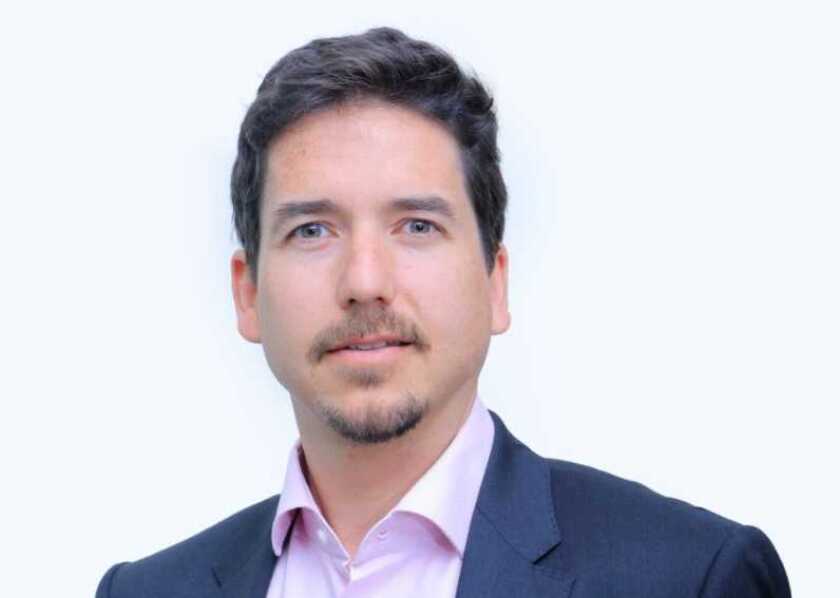The coming years are set to be seminal for carrier-neutral colo provider Raxio. With a pipeline of up to 12 facilities set to launch in key growth markets across Africa, the firm is on a trajectory that will see it deliver on a plan to be the first in its field.
The strategy has a deadline of “2023, early 2024,” according to company president Robert Mullins, who says the current aim is to operate 12-15MW across the portfolio as a first phase.
Established in 2018 by First Brick Holdings, Raxio has entered a notable growth phase in recent months. It is building Ethiopia’s first carrier-neutral Tier III colocation data centre and has confirmed a series of privately owned, carrier-neutral, facilities in the Democratic Republic of the Congo (DRC), starting with the first, Raxio Kinshasa.
In Uganda, Raxio Data Centre, located in Namanve, is scheduled to go live "in early May"; it will be one of less than 15 Tier III, privately-owned, carrier-neutral data centres in Africa. Services in Mozambique are due to be launched imminently.
The idea is to bring the metro edge model that is so popular in Europe to Africa, allowing for the exchange of traffic in facilities located close to urban centres with hybrid multi-cloud architectures.
“What you will see is many of the facilities that are popping up here are often based on legacy design. They are 10- to 12-year-old modular deployments, which offer little flexibility,” says Mullins, who is also president of the group’s holding company, First Brick Holdings.
The design upgrade also extends to sustainability provisions such as cooling technology – both for the sake of the environment and the bottom line.
“We have taken a different approach, almost upside down, and said ‘this is the design we want to bring to the continent and the market’. That is both in terms of the space and functionality of the data centre as well as the technologies within it,” he adds.
The strategy has two elements: explore new markets and build more in established markets. The target markets all have plenty in common and the proposition in each is centred around the exponential growth in connectivity and tandem demand for digital services. For example in the DRC, daily internet traffic has doubled in the last year alone presenting a compelling case for more ICT infrastructure that will support continued traffic growth.
“We see this in many markets and DRC is a good example, but we are really just at the beginning of this transition,” says Mullins who is quick to clarify that despite the numbers doubling, “you are starting at a very low level”.
He adds: “All the indicators are there that as the infrastructure comes in and to support better user experience and drive the cost down of connectivity as well, that in our minds will just continue to accelerate.”
The same characteristics are sought in all new markets, which for Mullins means that when it comes to identifying the next location, it’s easier to consider where Raxio is not present.
“The Kenyas, the South Africas and Nigerias. They are at the forefront of a lot of what is going on across the continent, and certainly capacity is needed there, but there is a lot of attention and activity being announced in those markets.
“Our view is that many of the secondary markets have very similar needs, albeit on a slightly smaller scale. The need is there, the need is rising and you read all the reports and stories and research that has gone to the space recently and there is – at a macro, long-term level – a serious dearth of the necessary infrastructure almost across the whole continent,” Mullins observes.
Tier one markets are the driving force behind the more than 12% compound annual growth rate (CAGR) recorded continent-wide, which will see the data centre industry reach values of US$3 billion by 2025. For Raxio the focus is on these secondary, or tier two, markets where the industry is still nascent and growth margins more attractive.
However, with so many secondary markets to choose from, prioritisation is key.
Mullins says: “You could say every one of the 54 countries in Africa needs this kind of infrastructure, that’s
probably true, but we of course need to prioritise and think about where things are needed most, or where they are lacking most, in the short term and then build out from there.”
Being first
Being first in a new market is a significant achievement but as Mullins admits, “there are challenges that come along with that”, among them land acquisition, market education and perceptions of quality.
According to Mullins, “probably the single most important decision we make upfront, before we start building,” is finding a sufficiently-powered location.
“Your choice of location will be with you for the whole lifecycle of the facility and can have significant repercussions on your costs for electricity and the uptime that you have. There’s a whole level and depth of analysis that goes into site selection with regards to all the services that are available and the quality of those services,” he adds.
Referencing the Uganda plot as an example, World Bank data for 2018 put the country in the bottom 20 bracket for electricity uptime on a global basis, with a score of 42.6 compared to a Sub-Saharan average of 47.7.
“If you look at the market from a macro level, utility or electricity uptime across the country, it’s anywhere between 65 to 70%,” says Mullins. “The site we have selected is on two redundant rings, in an industrial park, so our uptime there is 99 to 99.5%,” he adds. The next challenge is to tempt the tenants to the location. “From a customer side there is a bit of an evangelisation process,” Mullins continues.
“This [proposition] is something that is new in the market and although many of the customers we speak to are tech savvy, so they understand their own needs relatively well, they don’t fully understand the offering or necessarily the advantages of relocating.”
Magnifying the challenge there is also an element of once bitten twice shy to overcome because, as Mullins relays some operator owned facilities have in the past offered substandard services.
“People have been a little tainted at times by those experiences,” he explains.
However, with these elements in place, demand is increasing.
Tapping Africa
There are many points of interest in the Raxio story, but this isn’t simply another tale of data centre expansion; it’s a story about how funding models across the African continent are evolving with the intent of driving progress.
Raxio’s investor Roha has backed it from the start. However, Roha – in which Mullins is a partner – isn’t solely focused on data centres. “Our mandate is to invest in Africa exclusively,” Mullins says.
“We see Africa as an opportunity to look at things similar to what we are doing in the data centre space, across different industries, but look at things that for whatever historical reasons, have not been done yet,” he adds.
Much like Raxio’s market strategy, Roha’s MO has two parts: make an impact and don’t invest in existing businesses. That way “we are able to build things from the ground up,” Mullins explains.
At the time of writing, Roha had investments in five diverse companies, all with “similar underlying characteristics”. From an Ethiopian container glass company to asset finance company AAFC, a key objective is that “most, if possible all, of the businesses have pan-African potential”.
“Coming back to data centres, it’s the same sort of thing,” he adds.
When it became apparent that the trends in Uganda’s data centre industry repeated in other markets, it drove the creation of Roha’s broader, multi-market strategy.
“You could argue there is demand for many other things, but we look to things that are really untapped, for whatever historical reasons. Sometimes it’s regulatory and other times it’s just maturity of different industries.
“With data centres things are just kind of coming together. As connectivity has improved dramatically over the last 10 years – and will continue to with all the plans and investments that have been announced and are ongoing – it kind of becomes a perfect storm in terms of the bits and pieces where we come in and fill in the puzzle,” Mullins continues.
Then, less than a fortnight after this interview, Raxio received a $48 million cash boost from Meridiam, the French asset manager specialising in mobility, social infrastructure, and energy transition and environment. The funds will be used in the expansion drive, as will Meridiam’s sustainability expertise.
What Raxio is bringing to Africa is worthy of the headlines, but Africa’s geography, infrastructure development and digitalisation is driving an undeniable opportunity for the global data centre market, too. As more tier two, and eventually tier three markets open up, that trend will only accelerate.
For Raxio the focus is on completing construction of the Ethiopia facility, regardless of the additional challenges posed by the pandemic. It’s a project Mullins says will be constructed “On an accelerated timeframe, we hope”.
He concludes: “With us and a couple of others coming to the continent alternatives are going to be there. By any objective assessment I think they are going to be better alternatives, both from a cost and service perspective.
“So over time, and actually really quickly, there is going to be the realisation that with these alternatives it is going to shift how people are thinking about their own IT equipment, where they want to put it, and the extent to which they want to invest themselves to support it.”





